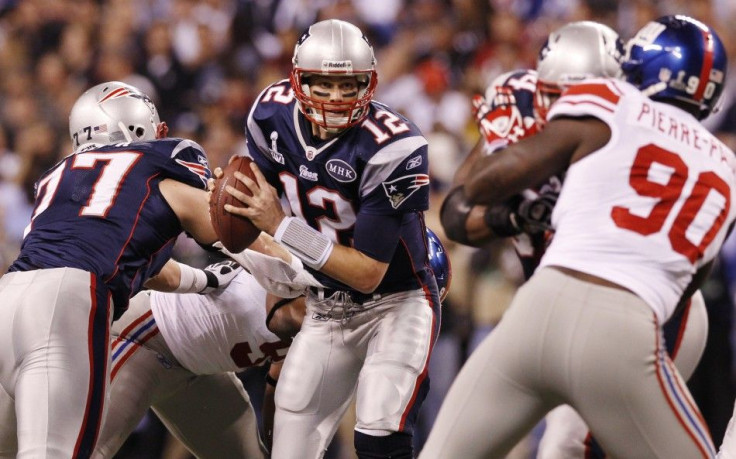Deflategate: Data Analyst Provides Statistical Evidence Of New England Patriots' Fumbles

Throughout "deflategate," most of the talk has been about the ease of throwing a deflated ball. The recent investigation has sparked debate over whether New England Patriots quarterback Tom Brady would have a passing advantage if the ball wasn’t pumped to the NFL's weight requirement.
Warren Sharp, a data-analyst and writer at sharpfootballanalysis.com, offered some unique information about the Patriots last week. A deflated football is easier to grip and the Patriots “are nearly fumble-proof.” One post goes into detail about this, but Sharp provides perhaps an even bigger takeaway.
“The most remarkable thing was the fact that in 2007 through the present day something with the New England Patriots changed from the prior years of 2000 through 2006, which made them much more resistant to fumbling the football,” Sharp told International Business Times.
From 2006 to 2007 the Patriots jumped from fumbling once every 39 plays in 2006 to once every 76 plays in 2007. From 2000-2006 the Patriots fumbled about the same amount as the rest of the league, since 2007 onward they have, on average, fumbled much less, according to Sharp’s data analysis. If you look at Sharp’s data and graphs, the Patriots do seem to be much more resistant to fumbling since 2007. In fact, on Sharp’s graphs they are way outside the normal range for fumble rates. He also contends that Brady and the Patriots did well in wet weather.
Sharp points out that Brady and Peyton Manning successfully lobbied to have teams bring their own footballs to games in 2007.
“The timing is suspicious,” Sharp said.
But that’s not definitive proof of any foul play. As with any theory about a scandal, a well-researched investigation is almost certainly needed. Sharp even conceded that “we may never, really, ultimately know the answer.”
There are arguments against Sharp’s data. He excluded teams that play in domes, because they fumble less on a whole because they are allowed ideal weather conditions. Sharp did say that the Patriots do remain near the top of the league if dome teams were included, however.
He pointed out that having a dome-team-like fumble rate means the Patriots are truly exceptional at not coughing the ball up. Sharp also contends that adding dome teams to the total-NFL-average fumble rate doesn’t change the big picture.
“There’s still a wide gap between the Patriots and the rest of the league,” Sharp said.
He has his share of detractors, including Twitter users who have made efforts to debunk his data.
Theories for the non-fumbling are plentiful. They include Belichick’s coaching, the types of plays the Patriots run, that the data is skewed by omission of dome teams, etc. Deadspin even published an article written by statisticians, going point-by-point critiquing one of Sharp’s post. By Tuesday afternoon, however, Sharp had yet to see a theory that swayed him.
“I spend every waking hour on the weekends digging into the NFL and college football,” he said.
Sharp appears to be a very dedicated tout. His day job is in engineering, but Sharp has a passion for sports. His series of deflategate posts have certainly put his passion on the map. Sharp’s writing has been re-posted on Slate.com and he earned a call-in to Dan Le Batard’s ESPN radio show.
The data, at the very least, adds an interesting dimension to the deflategate conversation. Sharp welcomes people to try and find new data or crunch numbers on their own.
“I think it’s great everyone has their opinion,” he said.
© Copyright IBTimes 2025. All rights reserved.






















